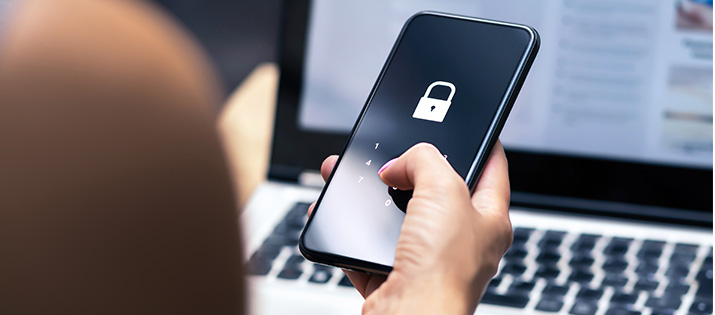How to Protect Yourself
American Community Bank & Trust has identity theft procedures in place to protect the safety and security of your identity and your accounts with us. Today, thieves use sophisticated computer technology to steal from bank accounts.
Account hijacking, a form of identity theft, is one of the fastest growing areas of concern. While some identity theft victims are able to resolve their problems quickly, others spend hundreds of dollars and many hours repairing damage to their good name and credit records. We encourage you to take every precaution to prevent this from happening to you.
Account hijackers want your personal banking information so they can take over your bank account. If this happens, it could take weeks or months to discover. Identity thieves need your personal information to perpetuate their crime.

When a thief uses your name, address, social security number, driver’s license number, or credit card number to commit fraud, you are a victim of identity theft. It can start with a lost or stolen wallet, pilfered mail, a data breach, a computer virus, phishing, a scam, or paper documents you throw away.
Protect Your Personal Information and Financial Identity
American Community Bank & Trust is committed to confidentiality, and protecting the integrity of your private financial information is our priority.
- Never reply to an email or pop-up message asking for personal or confidential information.
- Do not reply or click on a link in an email warning that your account will be closed or interest suspended unless you reconfirm your billing information. If you have concerns, contact the legitimate company cited in the email using a telephone number or web address you know is genuine.
- Email messages are generally not secure and not encrypted. Never include account numbers, debit card numbers, personal account information or passwords in emails sent to the bank.
- Report lost or stolen debit cards immediately.
- Report lost or stolen checks and credit cards immediately.
- Never provide personal information in response to an unsolicited call, fax, letter, email, or internet advertisement.
- Shred old documents (e.g. canceled checks, tax returns, receipts, bank statements) and current mail, especially credit card solicitations.
- Use direct deposit wherever possible.
- Use American Community Bank & Trust’s online bill pay.
- Reconcile your monthly bank statements and contact the bank within 30 days with any discrepancies or unauthorized activity. Even better, sign up for American Community Bank & Trust’s Online & Mobile Banking and check your account balances and activity daily.
- Sign up for eStatements to eliminate mail and paper.
- Review your credit report with each of the three major credit bureaus each year to ensure the accuracy of the information being reported: https://www.annualcreditreport.com/cra/index
Visit the following websites to learn more about identity theft schemes:
- http://www.consumer.gov/idtheft
- https://consumer.ftc.gov/identity-theft-and-online-security/identity-theft
Protect Your Computer System
- Use secure passwords that are nine characters in length or longer. Avoid family names, pet names, your home address, and other common passwords.
- Passwords should include upper case letters, lower case letters, numbers and/or special characters.
- Avoid using the same user name/password for accessing multiple websites.
- Install an anti-virus program on your computer and keep it up to date.
- Obtain anti-spyware software and frequently run online updates.
- Install a firewall and check regularly for online updates. This protective wall between your computer and the internet helps prevent unauthorized access to your computer.
Stay Informed
Account hijackers use several methods to collect your personal data.
- Phishing – Ignore the bait. Don’t bite.
Account hijackers may send deceptive emails claiming to be your bank or the government. This email typically tells you that there is a problem with your account and asks you to click on the included hyperlink to fix the problem. When you click on the link, you are taken to a fraudulent website (one that may look nearly identical to the real original website). Here you are asked to update your personal information such as your password, credit card number, social security number and bank account information. The goal is to trick you into divulging sensitive information in order to hijack your account. - Spyware – Beware of malicious software that secretly collects information.
Account hijackers may attempt to get you to unknowingly install spyware software on
your computer. When you open a seemingly harmless email attachment or click on a
pop-up advertisement, spyware can be downloaded to your computer. Once installed, it
collects selected information and can track your browsing habits on the internet. - Malware – This is short for malicious software. It is a computer virus that is designed to gain access to your private computer system.
10 Best Practices
Download our 10 best practices to keep your information secure.
